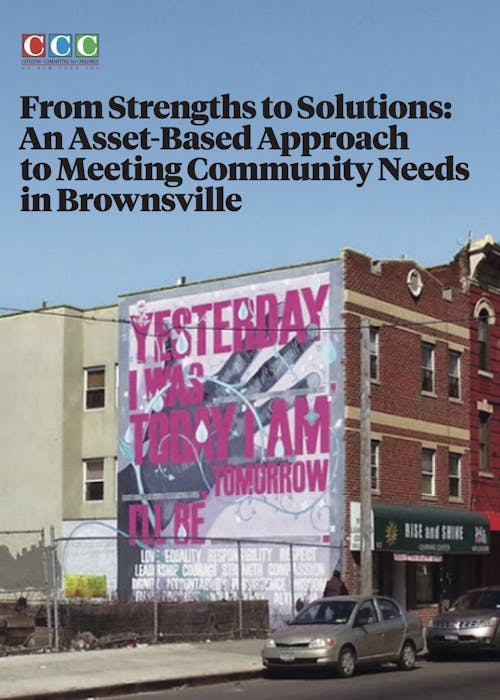

From Strengths To Solutions: An Asset-Based Approach To Meeting Community Needs In Brownsville
Data Resources
March 1, 2017
Since 1944, Citizens’ Committee for Children of New York (CCC) has engaged colleagues in government, philanthropy, and direct service in data-driven discussions about the needs of children and families in communities throughout New York City and the practical solutions to address those needs. For more than two decades, we have maintained the nation’s most comprehensive database tracking the well-being of the city’s children and families, and we make that information available to the public through a free online tool called Keeping Track Online. We analyze this data in CCC’s Community Risk Ranking and Keeping Track of New York City’s Children publications.
Together, these data tools have helped CCC describe the conditions faced by New York City’s children citywide, across each borough, and in each of the city’s 59 community districts. Historically, much of the data used to describe the status of children and families has focused on needs and risk factors, and these indicators are commonly collected through a variety of state, local, and federal government sources. For example, CCC’s Community Risk Ranking examines data related to child poverty, family homelessness, infant mortality, educational test scores, teen idleness, and violent felony rates among others. Yet we know that children’s outcomes are defined by a complex interplay of both risk factors andthe assets or resources that exist to help children and their families overcome barriers to well-being.
We also know that in order to effectively improve outcomes for children and families, we must target our solution-seeking at the most local level and engage community stakeholders in our efforts to unearth the opportunities that are present. For these reasons, CCC has undertaken a comprehensive effort to establish a method through which to identify assets or resources in New York City communities, starting with the neighborhood of Brownsville in Brooklyn.
We began by leveraging our Keeping Track database to provide a foundation for our understanding of the needs of Brownsville’s children and families. We then met with colleagues in government, nonprofit, and academic organizations to identify data on key assets or resources that should be present at the community level. Asset data were then collected from a wide range of local government agencies to illustrate the services, supports, and infrastructure that exist in Brownsville.
To ensure we presented a complete picture of the challenges, strengths, and opportunities present in Brownsville, we engaged residents and organizations working in the community throughout our process. These conversations helped to identify issues that were revealed through the data that required closer examination, raised additional areas of concern for which data needed to be explored, and provided a deeper understanding of the story the data was telling from the perspective of those living and working in the community. This was instrumental in gaining insights on issues such as a lack of sufficient resources, conditions within the community that limit access to services, and concerns about quality that may drive residents away from available resources.



